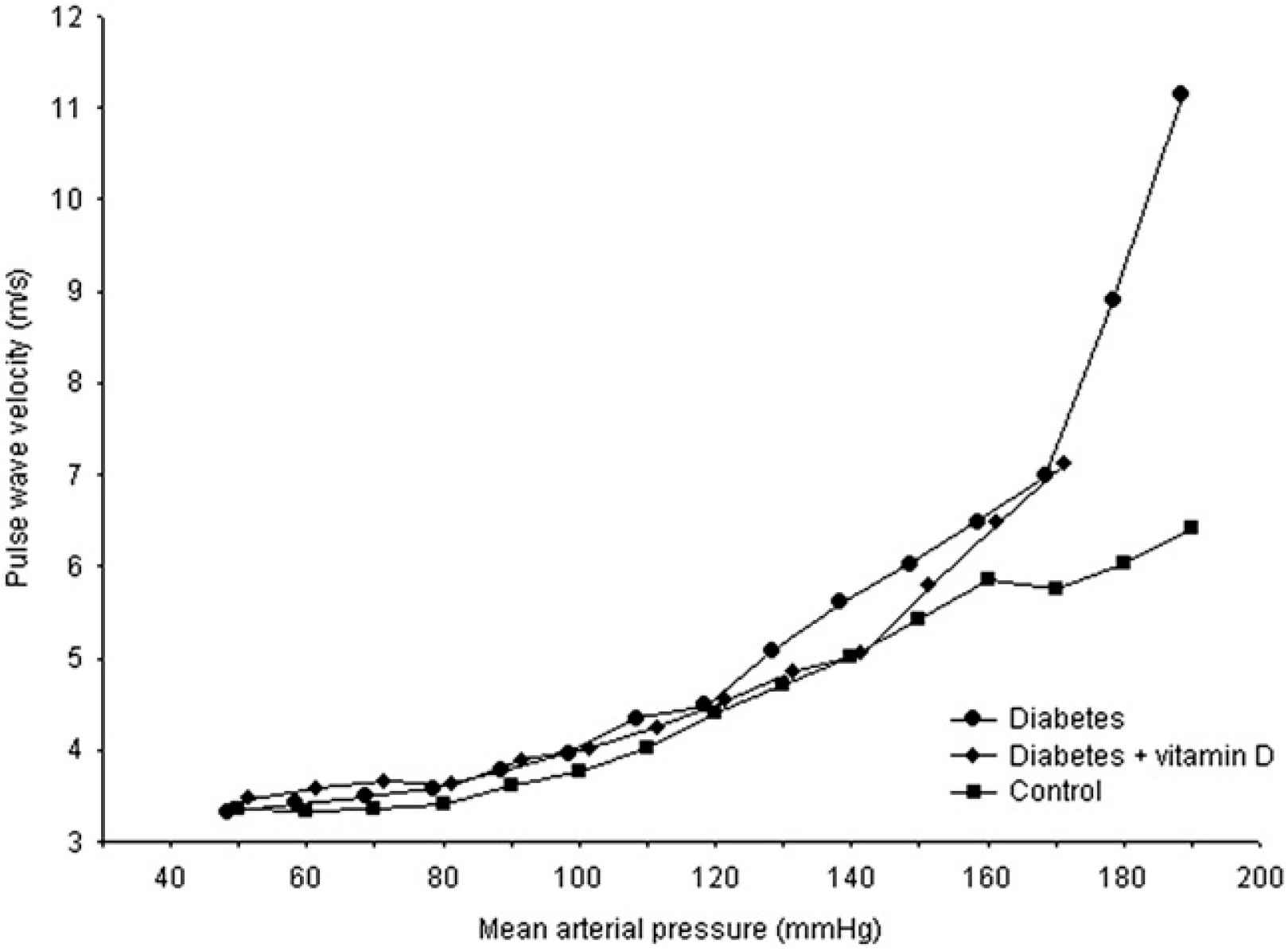P4.05 CHARACTERISTICS OF AORTIC STIFFNESS IN DIABETIC RATS TREATED WITH VITAMIN D
- DOI
- 10.1016/j.artres.2011.10.050How to use a DOI?
- Open Access
- This is an open access article distributed under the CC BY-NC license.
Background: Diabetes mellitus is associated with macrovascular complications characterized by increased aortic stiffness. Mechanisms of diabetes-induced vascular impairment include persistent activation of the inflammatory system that may be improved by the immunomodulatory effects of orally administrated vitamin D. This study aimed to examine the effects of diabetes on the elastic properties of the aorta and the protective effects of vitamin D treatment.
Methods: Diabetes was induced by injection of streptozotocin in male Wistar rats (age 4 months), followed by oral administration of cholecalciferol (500 IU/kg) for 10 weeks. Aortic pulse wave velocity (PWV) and other hemodynamic parameters were recorded over a mean arterial pressure (MAP) range of 50 to 200 mmHg using a dual pressure sensor catheter. Serum 25-hydroxyvitamin D (25[OH]D) level was measured using a radioimmune assay.
Results: In diabetic rats, PWV was significantly elevated across MAP range between 120 and 200 mmHg. PWV across lower MAP range did not reveal any significant differences between all groups. Administration of vitamin D did not improve aortic stiffness, despite high levels of serum 25(OH)D in the treatment group, compared to the placebo group (513±132 nmol/L vs 108±38 nmol/L, respectively). Other hemodynamic parameters (heart rate, systolic and diastolic blood pressure, and pulse pressure) were not different between all groups at any given level of MAP.
Conclusion: PWV profile determined under isobaric conditions demonstrated increased aortic stiffness in diabetic rats that was not improved by vitamin D supplementation.

Cite this article
TY - JOUR AU - E. Salum AU - P. Kampus AU - M. Zilmer AU - J. Eha AU - M. Butlin AU - A.P. Avolio AU - T. Põdramägi AU - J. Kals PY - 2011 DA - 2011/11/29 TI - P4.05 CHARACTERISTICS OF AORTIC STIFFNESS IN DIABETIC RATS TREATED WITH VITAMIN D JO - Artery Research SP - 160 EP - 161 VL - 5 IS - 4 SN - 1876-4401 UR - https://doi.org/10.1016/j.artres.2011.10.050 DO - 10.1016/j.artres.2011.10.050 ID - Salum2011 ER -
